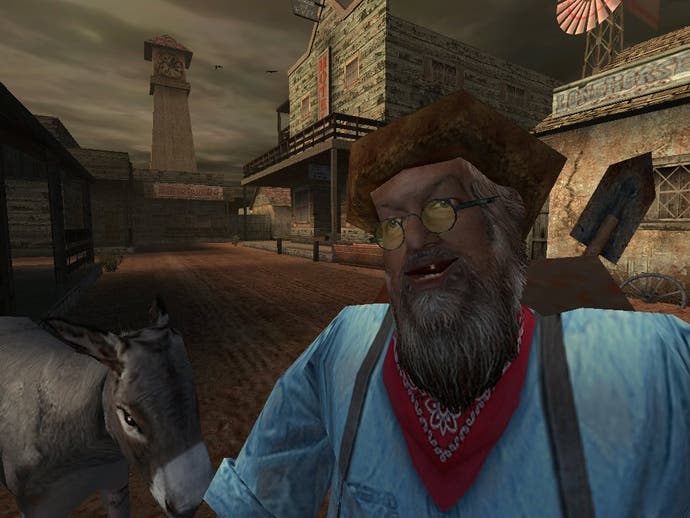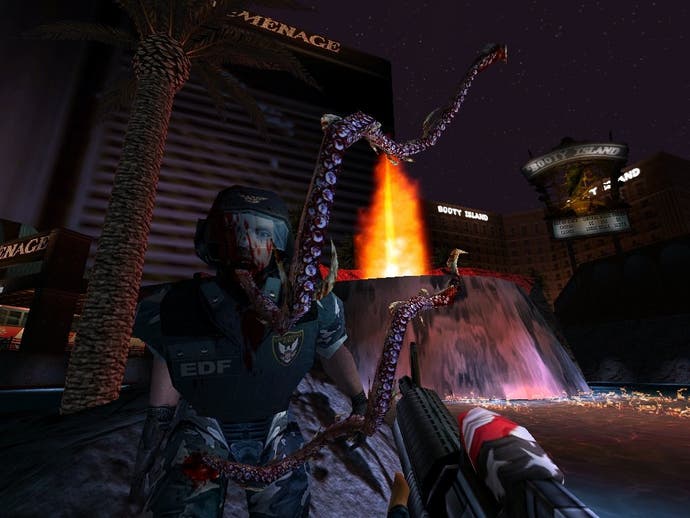Duke Nukem Forever
End of an error.
Where were you in April 1997? It's a little over 12 years ago. Perhaps you were still at university, or just starting your first job. Some of you won't remember at all.
Me, I fall somewhere in the middle. I was 16 in the spring of 1997, and I had finally convinced a magazine editor to let me write a couple of pages about videogames every month. Somewhere in my parents' attic, there's a dog-eared copy of that magazine turning yellow and crinkling around the edges. In it is the first page of copy I ever got paid for - including breathless reporting of two huge new PC games which had been announced almost back-to-back in the previous fortnight. Their names were Daikatana, and Duke Nukem Forever.
We all know about how Daikatana went off the rails. Most of us probably remember designer John Romero promising to make us into his bitch, but when the vastly over-schedule and over-budget game finally turned up in May 2000, it did so with a submissive whimper rather than a throaty, dominant growl. Nobody became Romero's bitch, with the possible exception of Eidos, who funded the whole mess.
Media and gamers alike made Daikatana into the butt of their jokes for months - but even as we rolled our eyes at Romero's folly, we were all casting nervous glances back at Duke Nukem Forever. Born from the same background in Texas' fertile FPS development scene, Duke Nukem appeared to share some of Daikatana's problems. A planned launch in mid-1998 had been greeted not with a huge splash at retail, but rather with a slightly understated announcement that the game, originally based on the Quake 2 technology, would now switch to the Unreal Engine.

OK, fair enough. We'd seen the Unreal technology at work, and my god, it was beautiful. Unreal sold 3D cards by the bucketload as gamers rushed to experience the world Epic had crafted. If the guys at 3D Realms had had the same shivers run down their spine when they walked out of the crashed spacecraft for the first time, or when the ominous Sunspire presented itself to be scaled, then who could blame them for wanting some of that magic in Duke Nukem Forever? Besides, Duke Nukem 3D was one of the most entertaining games of its generation - who were we to question the creative decisions of the guys who made that?
1999 arrived. When 1999 departed, the only things which 3D Realms had to show for it were a brief announcement about moving to another new engine (an updated version of the Unreal Engine, so not a big deal, we assumed) and a Christmas card featuring the Duke and strongly hinting that we'd see the game in 2000. The delays were amusing, but nobody was actually worried about the game - not least because the endless shenanigans at Ion Storm proved far more entertaining.
Daikatana turned up, as mentioned, in May 2000. Once we all stopped rubbernecking, however, all eyes turned back to Duke Nukem Forever. Announced ten days after Daikatana in 1997 and running similarly behind schedule, DNF felt like a brother in arms - so surely it, too, would finally make it onto retailers' shelves soon.

That was nine years ago. A year later, in the summer of 2001, we finally got a gameplay trailer - around two minutes of footage, released in celebration of Duke Nukem's tenth anniversary at E3. By today's standards, the video looks positively archaic, and even then - with games like Half-Life having raised the bar significantly for first-person shooters - it didn't look like a huge leap forward. Still, we reasoned, Duke Nukem 3D wasn't the technological leap forward that something like Quake represented, but it was still fantastic. Keep the faith.
That was the last time that any significant footage from Duke Nukem Forever would ever be released to the public. It was eight years ago. To date, it's the only official gameplay footage we've actually seen.
3D Realms has never been particularly keen on talking about Duke Nukem Forever. Unlike other studios of the era, which customarily released screenshots and videos in a steady flow throughout the latter stages of the dev process, bosses George Broussard and Scott Miller kept a lid on Duke's progress. Up to E3 2001, updates were sparse, but at least they were regular, and suggested significant ongoing work. After that E3, however, 3D Realms slowly but surely went dark.

